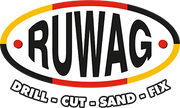How to Use SDS Drills
SDS drills offer a powerful, versatile power tool that is especially good for heavy-duty drilling into masonry and other hard materials. They can also be used for other materials such as wood and metal. Unlike standard rotary drills, these drills have a unique design that allows you to use the drill in three modes - rotary, hammer and rotary and hammer. This ensures a versatile drill that can be used for many projects.
How do you use SDS drills and what should you know about using this type of tool? Let’s take a look.
Getting the Most From SDS Drills
There are a few things that you should know to get the most from SDS drills. These include the following points.
Types
The type of SDS drill you choose will come down to the type of project you are planning. These drills come in a variety of sizes. A lighter drill such as an SDS Plus will be ideal for smaller DIY jobs - especially when drilling lighter materials. Mid-sized drills will get through tougher materials, with more power. To break through concrete and masonry, you will need a large drill such as an SDS Max, which uses larger drill bits. These are not made for drilling small holes or soft material. In addition to size, you will also need to consider whether you want a cordless or corded drill, both of which have their own benefits. SDS Plus and SDS Max drills both have ball bearing systems, however, they are not interchangeable due to the size of the locking grooves.
Modes
This tool has three modes, each giving you specific functions and uses.
- Rotary. In this mode, the chuck turns with no hammer action. It is best for lighter projects, such as drilling holes into wood to hang photos, doing woodworking projects, drilling into metals or making holes in plastics.
- Hammer. In this mode, drill bits move back and forward, while the chuck stays still without turning. It is ideal for breaking stone and concrete, drilling into brick, chiseling masonry and completing other heavy-duty projects.
- Rotary & Hammer. In this mode, the chuck turns and the drill bit moves back and forward at the same time. It is used for heavy-duty drilling into tough materials such as concrete, brick and other types of masonry.
Bits
You will need to use SDS drill bits in your SDS drill unless you are using an adaptor. An adaptor will convert a regular drill so that you can use SDS bits. These bits have slots in the shank that lock into the chuck. These slots enable the drive to move and back and forward within the chuck for hammer action. They also lock the bit in place to allow the bit to turn with the chuck, preventing any slipping.
SDS drill bits come in various shapes, sizes and lengths. Browse our selection to find the best bit for your needs or get a set that contains a selection of sizes.
We hope that this guide gives you more information on these versatile drills and their uses. If you’re looking for the best quality drill bits to use in your SDS drill, Ruwag has everything you need under one

